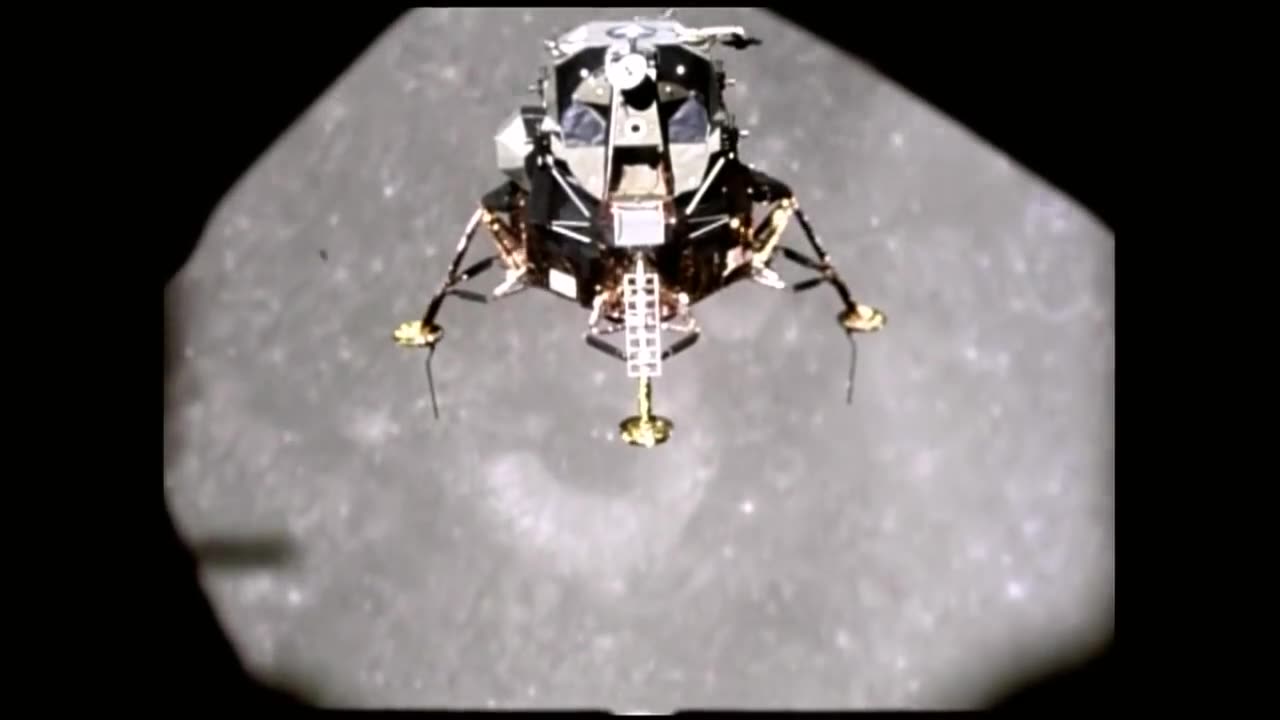Premium Only Content

Apollo 11 Landing on the Moon | NASA
The Apollo 11 mission was the first human spaceflight to land astronauts on the Moon. It was a historic event that took place in 1969, and it was a major achievement in the space race between the United States and the Soviet Union during the Cold War.
Here's a brief overview of the Apollo 11 mission and its historic landing on the Moon:
1. Crew: The Apollo 11 mission was crewed by three astronauts:
- Neil Armstrong: Commander
- Edwin "Buzz" Aldrin: Lunar Module Pilot
- Michael Collins: Command Module Pilot
2. Launch: Apollo 11 was launched from Kennedy Space Center in Florida on July 16, 1969, using the Saturn V rocket.
3. Journey to the Moon: The spacecraft traveled to the Moon over the course of several days. Michael Collins remained in lunar orbit while Neil Armstrong and Buzz Aldrin descended to the lunar surface in the Lunar Module, named "Eagle."
4. Lunar Landing: On July 20, 1969, the Lunar Module approached the Moon's surface. Neil Armstrong manually piloted the Lunar Module to avoid a field of large rocks and landed it safely in a region known as the Sea of Tranquility.
5. "That's one small step for man, one giant leap for mankind": On July 20, 1969, Neil Armstrong became the first human to set foot on the lunar surface. He famously said, "That's one small step for man, one giant leap for mankind," as he stepped onto the Moon.
6. Moonwalk and Experimentation: Neil Armstrong and Buzz Aldrin spent a total of about two and a half hours on the lunar surface, conducting experiments, collecting samples, and taking photographs. They also planted the American flag and left a plaque on the Moon's surface.
7. Return to Earth: After spending approximately 21 hours on the lunar surface, the astronauts re-entered the Lunar Module and then rejoined Michael Collins in the Command Module, which was orbiting the Moon.
8. Splashdown: On July 24, 1969, the Apollo 11 Command Module, with its crew on board, re-entered Earth's atmosphere and safely splashed down in the Pacific Ocean. The astronauts were recovered by a U.S. Navy ship, the USS Hornet.
The successful Apollo 11 mission marked a significant milestone in human history, demonstrating the capability of humans to travel to and explore another celestial body. It was a major achievement for science, technology, and international prestige and remains one of the most iconic events in the history of space exploration.
-
 LIVE
LIVE
DLDAfterDark
3 hours ago $0.02 earnedDLD Live! Feat. Red Dawn Readiness! Glock FRT's - Striker Fire Safety Concerns - ACE Trigger
265 watching -
 LIVE
LIVE
BlackDiamondGunsandGear
2 hours agoAre ALL Striker Fired Pistols UNSAFE? // After Hours Armory
753 watching -
 LIVE
LIVE
SpartakusLIVE
6 hours ago#1 Saturday Spartoons on RUMBLE PREMIUM
3,784 watching -
 1:04:59
1:04:59
Man in America
7 hours ago“Summoning the Demon” — The AI Agenda Is FAR WORSE Than We Know w/ Kay Rubacek
17.8K17 -
 LIVE
LIVE
Tundra Tactical
5 hours ago $0.04 earned🎯💥 The World’s Okayest Gun Show 🔫😂 | LIVE Tonight on Rumble!
168 watching -
 3:36:03
3:36:03
Mally_Mouse
1 day ago🌶️ 🥵Spicy BITE Saturday!! 🥵🌶️- Let's Play: Tower Unite!
30.1K1 -
 58:59
58:59
MattMorseTV
5 hours ago $0.95 earned🔴Trump just BROKE Newsom.🔴
49.3K54 -
 18:14
18:14
Her Patriot Voice
5 hours agoWho Is WORSE for NYC: Trump Girl or Socialist?
24.2K23 -
 3:39:42
3:39:42
SavageJayGatsby
5 hours agoSpicy Saturday with Mally! | Road to 100 | $300 Weekly Goal for Spicy Bites!
31.3K1 -
 LIVE
LIVE
FomoTV
7 hours ago🚨 Swamp Theater: FBI Raids Bolton 🕵 Still NO Epstein Files, Trump's Troops & the Red Heifer Hoax 🐂 | Fomocast 08.23.25
60 watching